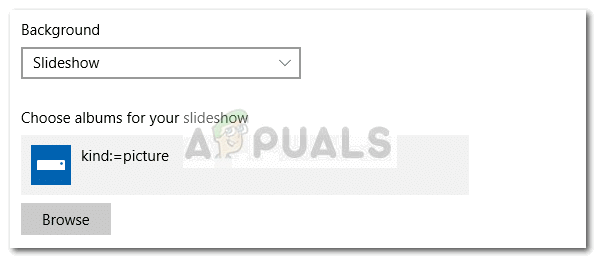Fix: Windows Background Slideshow Not Seeing Subfolders
Windows 10 is certainly an improvement over the older Windows versions. But in Microsoft’s classic style, there are are some things that worked perfectly on Windows 7 and Windows 8 that we’re unnecessary redesigned on Windows 10.
Such is the case with the built-in desktop background slideshow. Until the launch of Windows 10, you were able to select multiple folders to act as a desktop slideshow. Even more, if you would have selected a folder to act as a desktop slideshow, all its subfolders will also be taken into account. Well, with Windows 10, this behavior is gone.
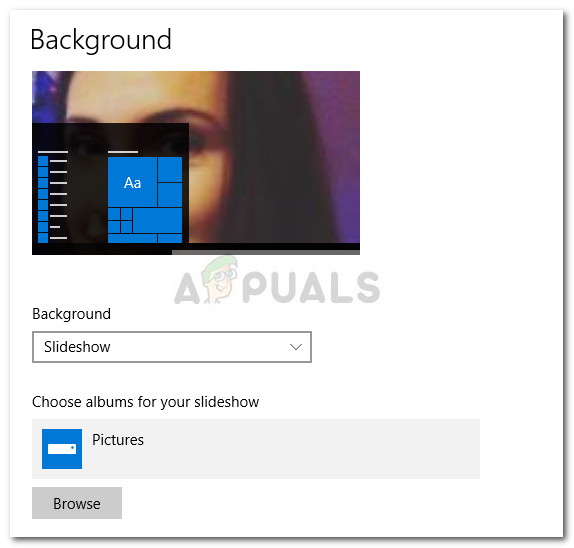
If you’re on Windows 10, you might have noticed that you can only select one folder at a time and all of its subfolders will not be used to generate the slideshow. Pretty counterintuitive, right? If you’ve taken the time to organize your selection of background images into subfolders, I can empathize with your frustration.
Fortunately, people have gotten around this issue and managed to replicate the old behavior. Down below you have a list of three different workarounds that can be used to force the Windows background slideshow feature to see the images in subfolders. Please follow whichever method seems more applicable to your situation.
Method 1: Launching the olde Control Panel Interface (not applicable on Creators Update)
Although this is by far the most convenable solution, it won’t be applicable if you have already updated to Windows 10 Creators Update. For some reason, Microsoft has decided to remove the functionalities of the two Run commands below, so they’ll only work if you have a Windows 10 version that is not yet updated with the Creators Update.
So if you’re lucky enough to have avoided the Creators Update (and have no plan on making the switch), follow the steps below to launch the classic Control Panel interface and configure your background slideshow the old way:
- Press Windows key + R to open up a Run window. In the run box, type (or paste) the following command and hit Enter to open the classic Control Panel interface:
rundll32.exe shell32.dll,Control_RunDLL desk.cpl,,@desktop
Note: If that doesn’t work, use this command instead:
control /name Microsoft.Personalization /page pageWallpaper
- Use the classic Control Panel personalization menu to configure your custom slideshow and hit Save changes when you’re done.
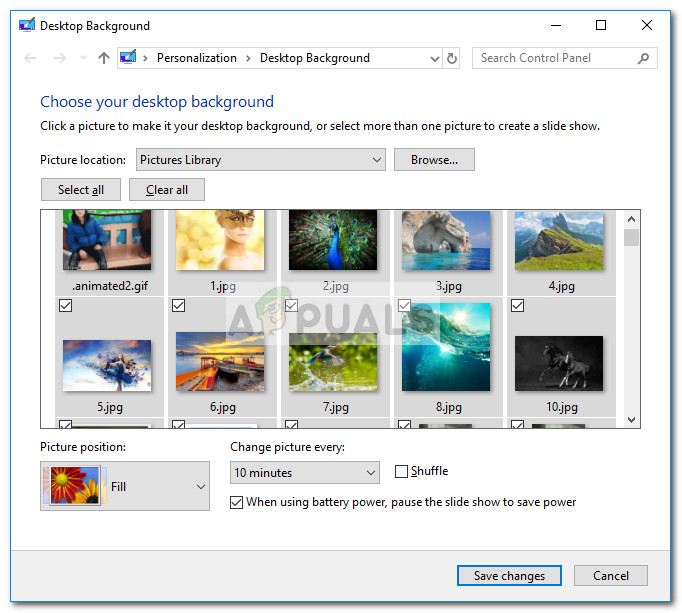
If this first method wasn’t applicable, jump straight down to Method 2.
Method 2: Using Shell to launch the classic Control Panel interface
Although this process is fairly similar to the one used in Method 1, this one uses a Shell command instead (which Microsoft didn’t restrict after the Creators Update). With this in mind, the steps below should work on any Windows 10 version, even if you have already applied the latest updates. Here’s a quick guide to launching the old background control panel UI using a Shell command:
- Before you open the classic Control Panel UI, I recommend setting up the image folder that you’re going to use. An easy approach is to add image folders as subfolders of the Pictures library folder.
- Once your image folder is set up, press Windows key + R to open up a Run prompt. Then, type or paste the following command to bring up the old Control Panel interface:
shell:::{ED834ED6-4B5A-4bfe-8F11-A626DCB6A921} -Microsoft.Personalization\pageWallpaper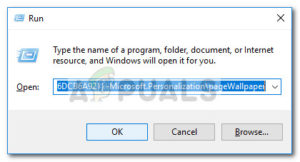
- Proceed to make the background slideshow selection as you see fit, then hit the Save changes button.
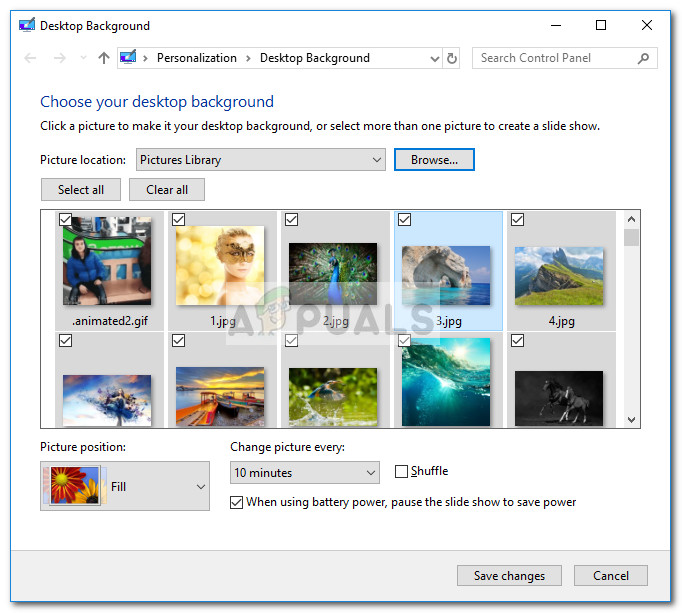 Note: You can use the Select all button if you not all entries are selected by default.
Note: You can use the Select all button if you not all entries are selected by default.
Method 3: Using File Explorer to create a desktop background slideshow
If you’re not comfortable with using CMD or Shell commands, you can also use File Explorer for a more intuitive way of replicating the old Windows behavior.
Here’s a quick guide to using File Explorer to create a desktop background slideshow that will include subfolders:
- Open File Explorer and navigate to the main image folder (the one that holds all the subfolders that you wish to include in the background slideshow).
- Click on the search function in the top-right corner and type “kind:=picture“.
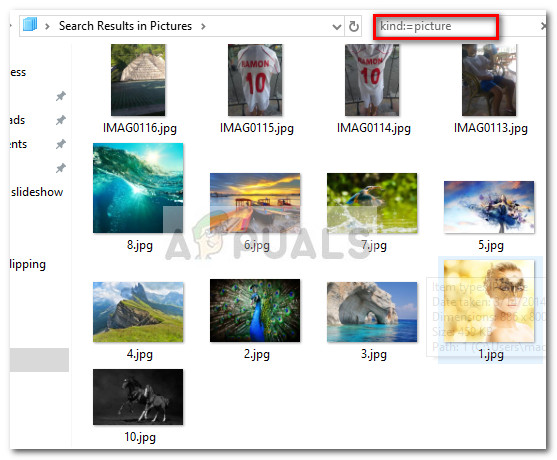 Note: You can also use “type:image” in the search box for the same result.
Note: You can also use “type:image” in the search box for the same result. - Once the selection is made, press Ctrl + A to select all images, then right-click on any of them and choose Set As Desktop background.
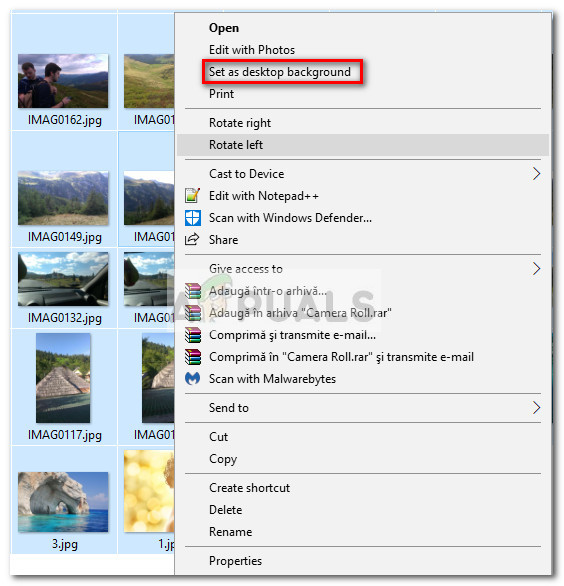
- That’s it. If you open the Background page of the Personalize menu, you should be able to see the search query that you previously constructed.
